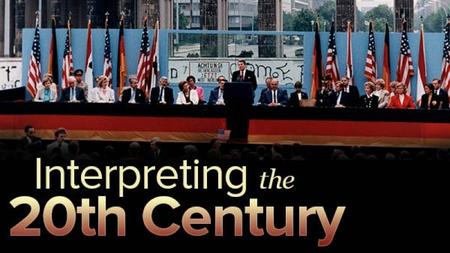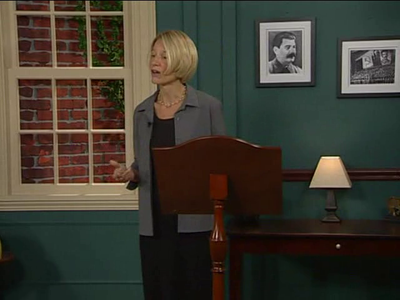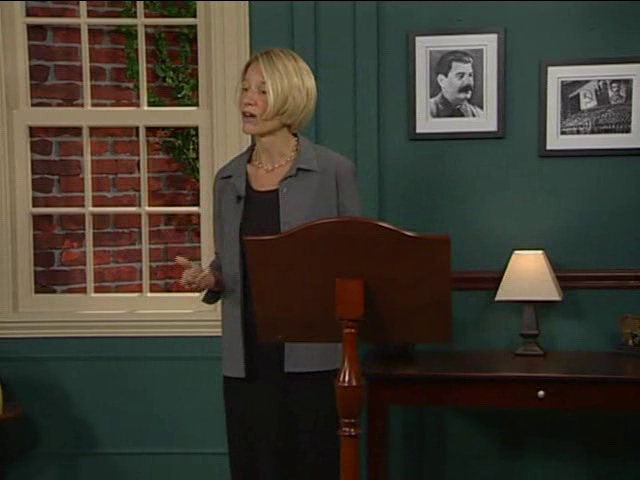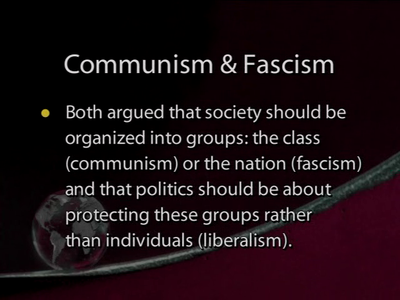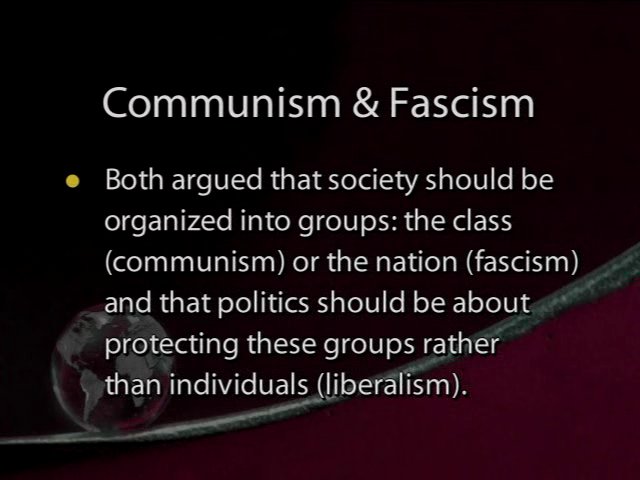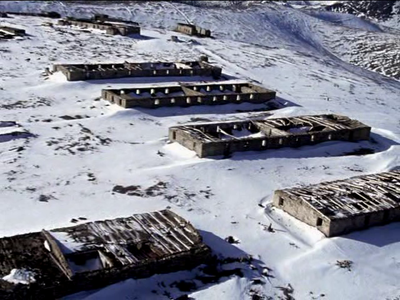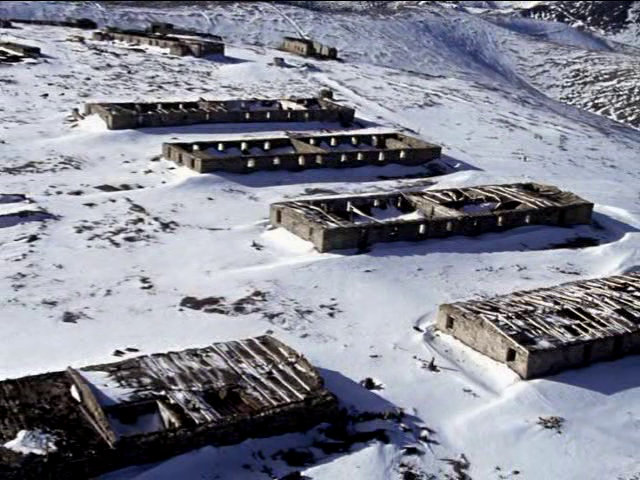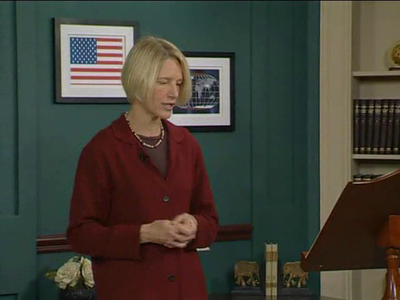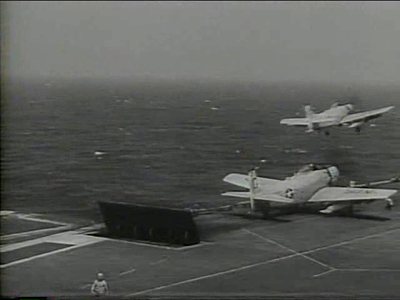Interpreting the 20th Century: The Struggle Over Democracy
48xWEBRip | English | AVI | 640 x 480 | DX50 ~659 kbps | 29.970 fps
MP3 | 128 kbps | 48.0 KHz | 2 channels | 24:28:42 | 8.25 GB
MP3 | 128 kbps | 48.0 KHz | 2 channels | 24:28:42 | 8.25 GB
Genre: eLearning / History, Politics
The 20th century transformed the political, social, and economic structures of the world in ways no one could have imagined as the 1800s came to a close. It was a time of intense and rapid change that stretches the capacity of the imagination: first flight and space flight, the Manhattan Project and the Welfare State, Nietzsche and Freud, the Great Depression and inflation, moving pictures and home computers, the Cold War and terrorism—and war and peace."The level of change experienced over a 100-year period is what most defines the 20th century," states Professor Pamela Radcliff.
Even today, more than a century later, that transformation is far from complete. The nations of the third world, at last free from the colonialism and imperialism that once marked their relationship with the West, are still caught up in the even more complex search for politically stable democracy and economic prosperity.
Interpreting the 20th Century: The Struggle Over Democracy is a comprehensive 48-lecture examination of this extraordinary time.
It is a course designed around history's ideas as much as its events, revealing how those ideas both influenced events and were in turn influenced by them to shape today's world.
It is a unique opportunity to gain a multidisciplinary understanding of how the modern world came to be and how democracy has emerged as a political ideal, although the parameters of a truly democratic world order are still being vigorously contested.
The subject's very nature demands not only an ability to distill political and economic trends from a century of world history, but to explain them with clarity, drawing on other disciplines as necessary to make key points come alive.
Professor Pamela Radcliff defines the perspective of the course as including what she calls the "Enlightenment Project"—the adoption of liberal, democratic, rationalist principles in much of the world—while emphasizing the unresolved nature of the struggle for democracy.
She concentrates on keeping the big picture extremely clear as she moves across whole eras, entire continents, and disciplines as specialized as international trade balances and movements in literature and art.
She consistently shows all sides of an issue when scholars are divided in their opinions and she makes generous use of primary sources, frequently quoting from those sources to ensure that her lectures convey the richest possible sense of each subject.
To make the tremendous breadth of the course comprehensible, Professor Radcliff presents it chronologically in seven sections best representing this struggle:
Section 1 is an introduction to the 20th century, which most scholars now mark from 1914 and the beginning of World War I.
Section 2 consists of the various crises faced by the West in the years between the wars.
Section 3 covers the challenge to democracy presented by Fascism and Communism, including the many approaches to totalitarianism represented by Nazi Germany and the Soviet Union.
Section 4 discusses external challenges to western power from China, India, Mexico, and Japan.
Section 5 explores World War II, including the Holocaust and the rise of Existentialism in post-war Europe.
Section 6 examines the post-World War II world order, including the Cold War, the changing relationship between science and the state, and the rise of the welfare state.
Section 7 concludes the course with a discussion of the challenges of development in a decolonizing world.
Explore a Range of Ideas in Depth
In detail, you will cover topics as varied as:
The "crisis of meaning" unleashed by World War I that challenged the political, cultural, and economic values of Western Europe and set the stage for decades of turmoil
The different approaches of Fascism and Communism to organizing and mobilizing the masses
How art provided a window into the psychological forces swirling through public life.
This course's intellectual breadth and vigor isn't reflected in lofty overview, but in vivid, ground-level history that lets you see those forces at work in:
The trenches of World War I, where new technologies created a level of carnage unparalleled in history
The theatrical action of Samuel Becket's Waiting for Godot, turning away from the hope of a salvation in a post-Holocaust world to seek dignity in individual struggle
The collective ability of a disillusioned generation here in the United States and around the world—protesting over the Vietnam War, inequality of education, the lack of gay rights—to transform political culture and the nature of democratic debate
The march through a dazzling variety of famous, infamous, and lesser-known figures who shaped and reflected the century's tumultuous events and changes, such as Samuel Becket, Marcel Duchamps, Frantz Fanon, Vladimir Lenin, Sigmund Freud, Alexandra Kollontai, Adolf Hitler, Josef Stalin, Mahatma Gandhi, Mao Tse-tung, Mikhail Gorbachev, Emiliano Zapata, Theodor Herzl, Kwame Nkrumah, and Martin Luther King, Jr.
Ideas Come Alive through Detailed Case Studies
For an even closer focus, the course also includes several lectures devoted to detailed case studies that illustrate how the models covered in the course have been translated into actual practice in post-colonial nations.
You see, for example, how the developmental model put into effect in Communist China differs from that used in Democratic India—and why—and the different results achieved in two countries that began their developmental process with very similar problems.
And see how they both differ from the authoritarian model that has been put into place in Japan.
Similarly, you'll get a chance to see three models of feminism that have resulted from the global women's movement:
Women organizing around their status as mothers, as in the "Mothers of the Plaza de Mayo" who alerted the world to Argentina's "disappeared"
The "everyday resistance" model linked to the world's poorest and least empowered women such as those in India's southwestern state of Tamil Nadu
The more familiar model of "equal rights" feminism seen here in the United States.
Plus, you frequently venture off the pathways of geopolitics or national revolution as you view the course's issues through different lenses. In Lecture 5, for example, you'll encounter Dadaist, Surrealists, and Futurist artists as they turn the ideas of Freud and Nietzsche into a chaotic post-World War I attack on the certainty, rationality, and objectivity of the 19th-century Western culture they felt had betrayed them.
In examining paintings by artists like Hannah Hoch or Otto Dix, or hearing the searing command of the Futurist Manifesto to "leave good sense behind us like a hideous husk," you understand the mood of an artistic world desperately trying to reject the past and steer a course toward what had to be a more promising future.
The Challenge of Defining Democracy
The main issue you address in this course, according to Professor Radcliff, is still a work in progress.
"Even after the better part of a century, the world's nations are still trying to define what real democracy is and how to establish it—not only within nations but between them as well, in the sense of fostering and sustaining relationships based on equality and not on raw power," she notes.
It is an extraordinary process that we continue to watch.
Lectures:
00. Professor Bio
01. Framing the 20th Century
02. The Opening Act—World War I
03. Framing the Peace—The Paris Peace Treaties
04. Intellectual Foundations—Nietzsche and Freud
05. Art and the Post-War "Crisis of Meaning"
06. Gender Crisis—The "Woman Question"
07. The Origins of "Mass Society"
08. Defining Mass Society and Its Consequences
09. Crisis of Capitalism—The Great Depression
10. Communist Ideology—From Marx to Lenin
11. The Rise of Fascism
12. Communist Revolution in Russia
13. The Totalitarian State? Nazi Germany
14. The Totalitarian State? The Soviet Union
15. China—The Legacy of Imperialism
16. The Chinese Revolution
17. India—The Legacy of Imperialism
18. India—The Road to Independence
19. Mexico—The Roots of Revolution
20. The Mexican Revolution and Its Consequences
21. Japan—The Path to Modernization
22. Japan—A New Imperial Power
23. The Pacific War
24. The European War
25. The Holocaust
26. Existentialism in Post-War Europe
27. Origins of the Cold War
28. The Cold War in American Society
29. Science and the State in Cold War America
30. The Welfare State
31. The Process of Decolonization
32. Challenges for Post-Colonial Societies
33. Competing Nationalisms—The Middle East
34. Development Models—Communist China
35. Development Models—Democratic India
36. The Authoritarian Development State—Japan
37. The Japanese Model—Available for Export?
38. Latin America—Dictatorship and Democracy
39. Hard Cases—Africa
40. An African Case Study—Nigeria
41. A Generation of Protests—Civil Rights
42. A Generation of Protests—1968
43. Global Women
44. The Rise of Fundamentalist Politics
45. Communism—From Reform to Collapse, 1956–90
46. The "End of History"?
47. Globalization and Its Challenges
48. A New World Order?
also You can find my other interesting History-posts
(if old file-links don't show activity, try copy-paste them to the address bar)
General
Complete name : 14. The Totalitarian State - The Soviet Union.avi
Format : AVI
Format/Info : Audio Video Interleave
File size : 176 MiB
Duration : 30 min 45 s
Overall bit rate : 799 kb/s
Writing application : FairUse Wizard - http://fairusewizard.com
Writing library : The best and REALLY easy backup tool
Video
ID : 0
Format : MPEG-4 Visual
Format settings : BVOP1
Format settings, BVOP : 1
Format settings, QPel : No
Format settings, GMC : No warppoints
Format settings, Matrix : Default (H.263)
Muxing mode : Packed bitstream
Codec ID : DX50
Codec ID/Hint : DivX 5
Duration : 30 min 45 s
Bit rate : 659 kb/s
Nominal bit rate : 4 854 kb/s
Width : 640 pixels
Height : 480 pixels
Display aspect ratio : 4:3
Frame rate : 29.970 (30000/1001) FPS
Color space : YUV
Chroma subsampling : 4:2:0
Bit depth : 8 bits
Scan type : Progressive
Compression mode : Lossy
Bits/(Pixel*Frame) : 0.072
Stream size : 145 MiB (83%)
Writing library : DivX 6.2.5 (UTC 2006-07)
Audio
ID : 1
Format : MPEG Audio
Format version : Version 1
Format profile : Layer 3
Format settings : Joint stereo / MS Stereo
Codec ID : 55
Codec ID/Hint : MP3
Duration : 30 min 45 s
Bit rate mode : Constant
Bit rate : 128 kb/s
Channel(s) : 2 channels
Sampling rate : 48.0 kHz
Frame rate : 41.667 FPS (1152 SPF)
Compression mode : Lossy
Stream size : 28.2 MiB (16%)
Alignment : Aligned on interleaves
Interleave, duration : 33 ms (1.00 video frame)
Interleave, preload duration : 504 ms
Writing library : LAME3.97b
Encoding settings : -m j -V 4 -q 2 -lowpass 17 -b 128
Complete name : 14. The Totalitarian State - The Soviet Union.avi
Format : AVI
Format/Info : Audio Video Interleave
File size : 176 MiB
Duration : 30 min 45 s
Overall bit rate : 799 kb/s
Writing application : FairUse Wizard - http://fairusewizard.com
Writing library : The best and REALLY easy backup tool
Video
ID : 0
Format : MPEG-4 Visual
Format settings : BVOP1
Format settings, BVOP : 1
Format settings, QPel : No
Format settings, GMC : No warppoints
Format settings, Matrix : Default (H.263)
Muxing mode : Packed bitstream
Codec ID : DX50
Codec ID/Hint : DivX 5
Duration : 30 min 45 s
Bit rate : 659 kb/s
Nominal bit rate : 4 854 kb/s
Width : 640 pixels
Height : 480 pixels
Display aspect ratio : 4:3
Frame rate : 29.970 (30000/1001) FPS
Color space : YUV
Chroma subsampling : 4:2:0
Bit depth : 8 bits
Scan type : Progressive
Compression mode : Lossy
Bits/(Pixel*Frame) : 0.072
Stream size : 145 MiB (83%)
Writing library : DivX 6.2.5 (UTC 2006-07)
Audio
ID : 1
Format : MPEG Audio
Format version : Version 1
Format profile : Layer 3
Format settings : Joint stereo / MS Stereo
Codec ID : 55
Codec ID/Hint : MP3
Duration : 30 min 45 s
Bit rate mode : Constant
Bit rate : 128 kb/s
Channel(s) : 2 channels
Sampling rate : 48.0 kHz
Frame rate : 41.667 FPS (1152 SPF)
Compression mode : Lossy
Stream size : 28.2 MiB (16%)
Alignment : Aligned on interleaves
Interleave, duration : 33 ms (1.00 video frame)
Interleave, preload duration : 504 ms
Writing library : LAME3.97b
Encoding settings : -m j -V 4 -q 2 -lowpass 17 -b 128
ScreenShots
✅ Exclusive eLearning Videos ParRus-blog ← add to bookmarks
Feel free to contact me PM
when links are dead or want any repost
Feel free to contact me PM
when links are dead or want any repost


